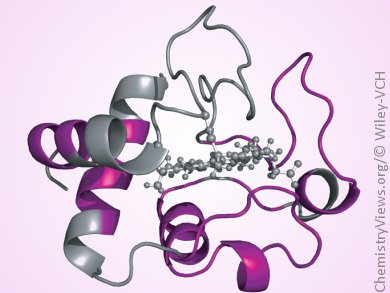How do proteins fold in the gas phase? Moritz Schennach and Kathrin Breuker, University of Innsbruck, Austria, set out to investigate how proteins fold in the complete absence of solvent, as they suspected that the gas-phase structures differ drastically from those in solution. The researchers used electron capture dissociation (ECD) to study horse and tuna heart Cytochromes c (Cyts c), which have similar folds but different amino acid compositions.
Breuker and Schennach observed that the native folds of the Cyts c disintegrate within 400 ms after desolvation, and that subsequent folding in the gas phase is much slower than in solution. The folding of horse heart Cyt c in the gas phase is completely different from and more complex than that in solution, and its structure does not really resemble the native fold. The folding of tuna Cyt c in the gas phase was found to be less complicated than that of horse heart Cyt c.
What is the cause of this markedly different behavior in the gas phase? The speed and polarity of folding implied that electrostatic interactions, such as salt bridges and hydrogen bonds, direct folding in the gas phase, rather than hydrophobic interactions, which are responsible for the faster folding observed in solution.
The researchers now plan to extend their study to proteins that function in less polar environments, such as membranes.
- Proteins with Highly Similar Native Folds Can Show Vastly Dissimilar Folding Behavior When Desolvated,
Moritz Schennach, Kathrin Breuker,
Angew. Chem. Int. Ed. 2013.
DOI: 10.1002/anie.201306838



